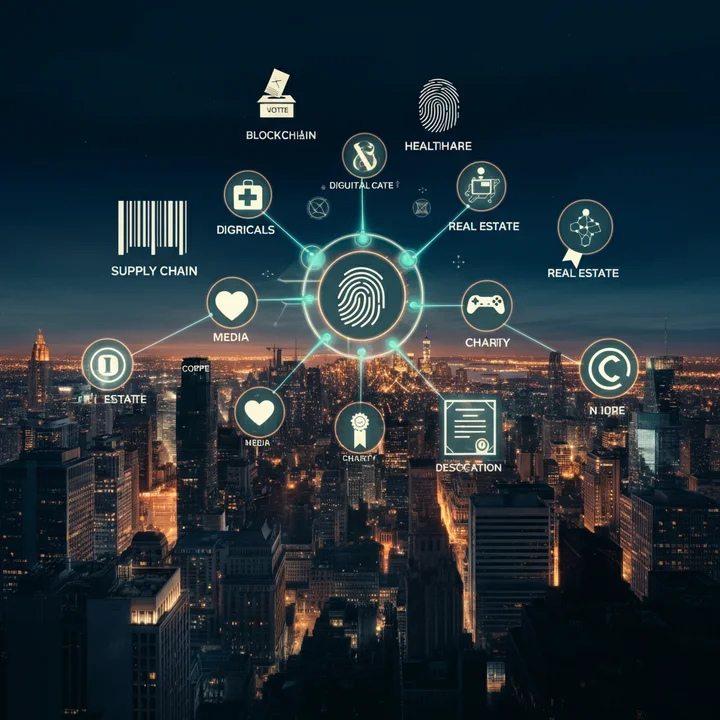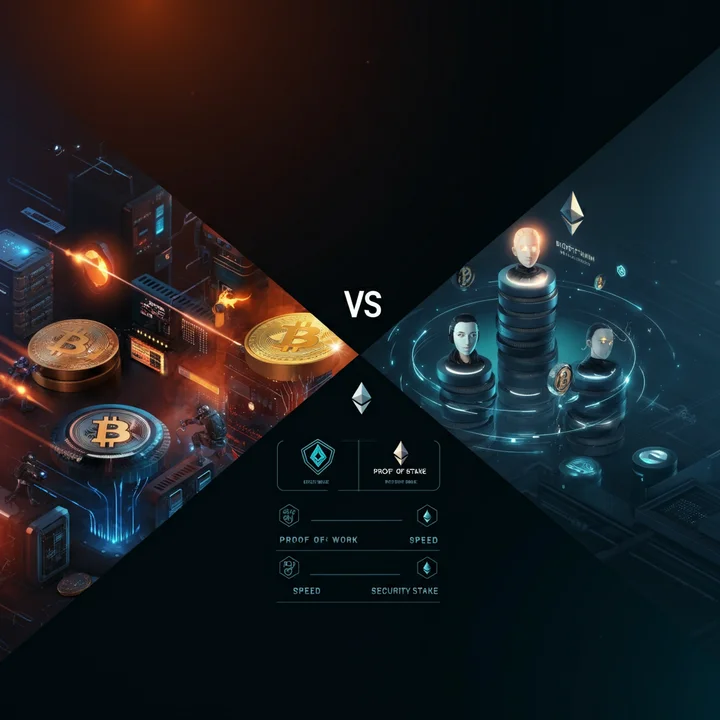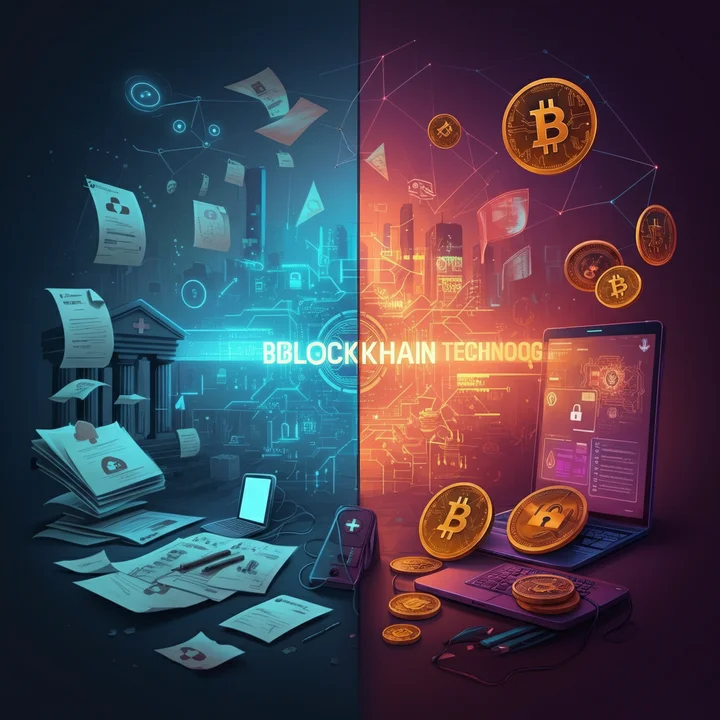The term "blockchain" is often thrown around in conversations about cryptocurrency, fintech, and even supply chain management. But what is blockchain exactly, and why is it considered revolutionary? If you’re new to this concept, don’t worry. This guide will break down the basics of blockchain technology, its origins, how it works, and the impact it’s already having on various industries.
By the end of this post, you’ll not only have a better understanding of blockchain but also gain insights into its real-world applications, benefits, and challenges. Whether you're a tech enthusiast or just curious about how blockchain works, we've got you covered.
A Brief History of Blockchain
To understand blockchain, we need to rewind to 2008, during the global financial crisis. A person (or group) under the pseudonym Satoshi Nakamoto introduced the revolutionary idea of blockchain as the underlying technology for Bitcoin, the first decentralized cryptocurrency. Nakamoto’s goal? Create a system that removes the need for a central authority like banks to verify transactions, ensuring greater transparency and trust.
Bitcoin’s launch in 2009 marked the first practical use of blockchain technology. While Bitcoin was the focus initially, people soon recognized the potential of blockchain beyond cryptocurrency. Today, blockchain serves as the foundation for systems in finance, healthcare, logistics, and more, enabling secure and transparent operations.
What Sets Blockchain Apart
What made blockchain so groundbreaking was that it solved two major issues:
Trust without intermediaries – No central authority is required to confirm transactions.
The double-spending problem – Blockchain ensures that digital assets cannot be copied or re-used.
With that history in mind, let's explore the nuts and bolts of blockchain technology.
Key Components of Blockchain
At its core, blockchain is a distributed ledger that records and secures transactions in a way that’s transparent yet tamper-proof. Here are the main components that make up this system:
1. Blocks
A blockchain consists of individual "blocks" that contain three key elements:
Data (e.g., transaction details like sender, receiver, and amount)
A unique identifier called a hash
The hash of the previous block, linking it to earlier entries in the chain
Think of each block as a page in a ledger, with each page referencing the one before it.
2. Nodes
Nodes are the computers or devices that form the blockchain network. Each node has a full copy of the blockchain ledger, promoting decentralization and ensuring that no single entity controls the data.
3. Hash Functions
Hashes are critical to the security of blockchain. These cryptographic algorithms convert transaction data into a fixed, unique string of characters. Even the slightest change in the input data produces an entirely different hash, making it easy to detect tampering.
By linking hashes from one block to the next, blockchain creates an unchangeable chain of data.
Core Principles of Blockchain
Blockchain operates on a few vital principles that distinguish it from traditional systems:
1. Decentralization
Unlike traditional databases managed by a central authority, blockchain is decentralized. Data is stored and verified across a network of nodes, ensuring no single point of failure.
2. Transparency
Blockchain provides a public ledger that anyone within the network can access. While individual identities can remain anonymous, the data is transparent to foster trust.
3. Immutability
One major advantage of blockchain is that once a transaction is recorded, it cannot be changed or deleted. This immutability ensures that the blockchain remains trustworthy and secure.
These principles provide the foundation for blockchain’s functionality and its role in enabling secure, efficient transactions.
How Do Blockchain Transactions Work?
To grasp blockchain's inner workings, let's walk through an example of a simple transaction using Bitcoin.
Step-by-Step Example:
Request a Transaction
Alice wants to send 2 Bitcoin to Bob. She creates a digital transaction request.
Broadcast to Nodes
The request is sent to the blockchain network. Nodes verify the transaction using algorithms, ensuring that Alice owns the Bitcoin she’s trying to send.
Create a Block
Once verified, the transaction is added to a "block" along with other transactions.
Validate the Block
The block is validated through a process called consensus, often involving Proof of Work (a computationally intensive puzzle solved by network nodes).
Add the Block to the Chain
Once validated, the block is added to the blockchain. The chain grows longer, and the transaction becomes permanent.
Completion
Bob receives the Bitcoin. Every node in the network updates its ledger to reflect this transaction.
Through this system, blockchain eliminates the need for intermediaries like banks, creating fast, secure, and transparent transactions.
Benefits and Challenges of Blockchain
While blockchain offers numerous advantages, it’s not without its complexities. Here’s a breakdown of its benefits and challenges:
Benefits
Enhanced Security
Thanks to cryptographic hashing and decentralization, blockchain is highly secure.
Transparency
Blockchain’s open ledger promotes trust among users.
Cost Efficiency
It eliminates costly intermediaries like banks or brokers.
Speed
Transactions can be completed much faster compared to traditional systems.
Challenges
Scalability
Blockchain networks, especially public ones like Bitcoin, can become slow and inefficient as they grow.
Regulatory Uncertainty
The legal landscape around blockchain and cryptocurrencies varies by country, creating challenges for adoption.
High Energy Consumption
Algorithms like Proof of Work require significant computational power, leading to large-scale energy usage.
Complexity
For many, blockchain remains a technical concept that's difficult to understand and implement.
Despite these challenges, blockchain adoption is steadily growing as solutions like Proof of Stake emerge to address issues like energy consumption.
Real-World Use Cases for Blockchain
Beyond cryptocurrency, blockchain has found applications in various industries:
1. Supply Chain Management
Blockchain ensures end-to-end visibility, allowing businesses to track products from origin to destination. For example, companies like Walmart use blockchain to track food safety within their supply chains.
2. Financial Services
From cross-border payments (Ripple) to smart contracts (Ethereum), blockchain is revolutionizing how financial transactions are conducted.
3. Healthcare
Blockchain ensures secure storage and sharing of patients' medical records, improving data privacy and accessibility.
4. Real Estate
Blockchain eliminates the need for intermediaries in property transactions, enabling faster and more transparent deals.
5. Digital Identity
Companies like IBM are working on blockchain-based digital identity solutions to reduce fraud and improve verification processes.
These examples highlight blockchain’s versatility and potential to disrupt traditional systems across industries.
Where to Learn More About Blockchain
Blockchain technology is here to stay, and the time to learn more about it is now. Whether you're a business professional looking to integrate blockchain into your operations or just a curious reader, there are plenty of resources to explore:
Online Courses: Platforms like Coursera and Udemy offer beginner-friendly blockchain courses.
Books: Check out Blockchain Basics by Daniel Drescher for an in-depth introduction.
Blogs and News Websites: Stay updated with reliable blockchain news on CoinDesk and Decrypt.
The future of blockchain is still being written. By understanding its potential and limitations, you'll be better prepared to harness it for personal or professional growth.



